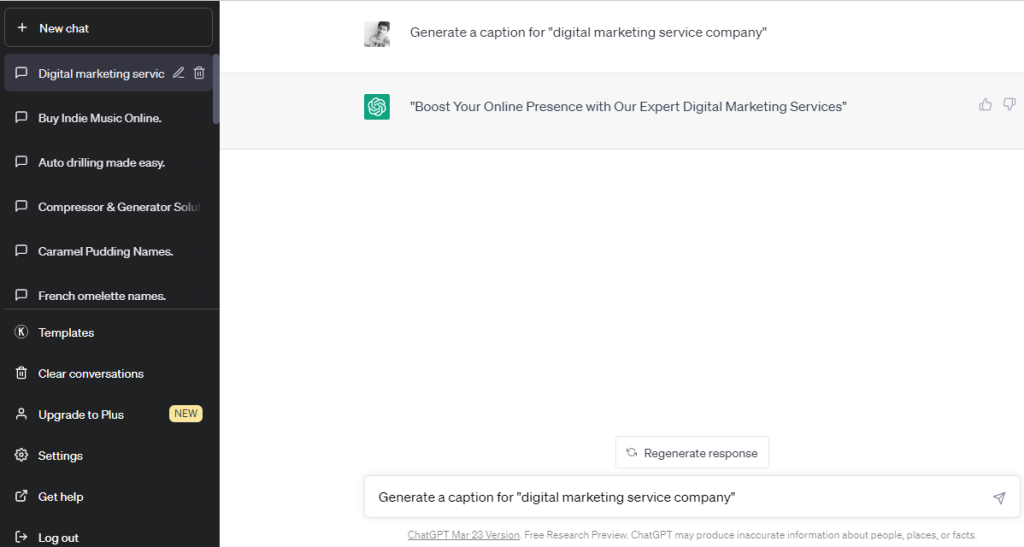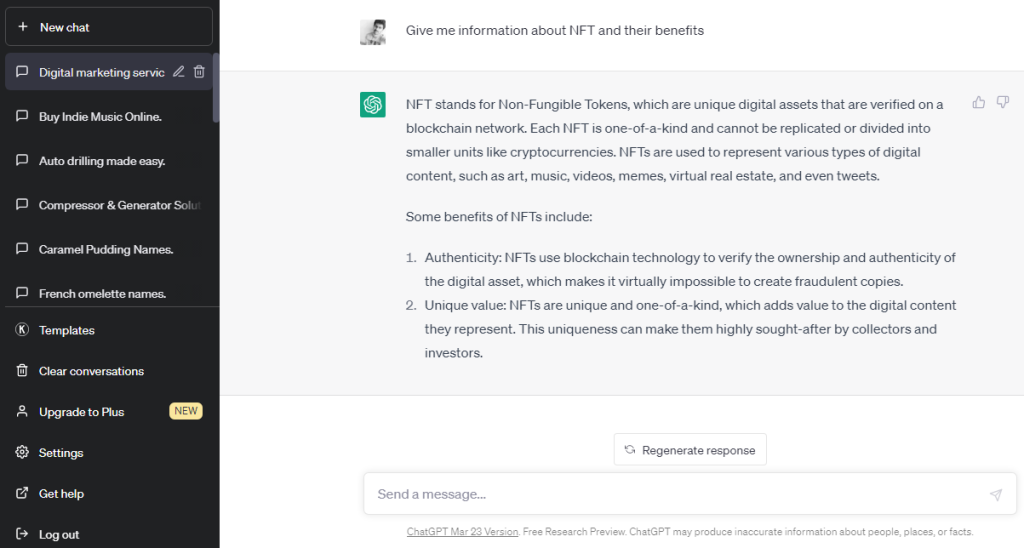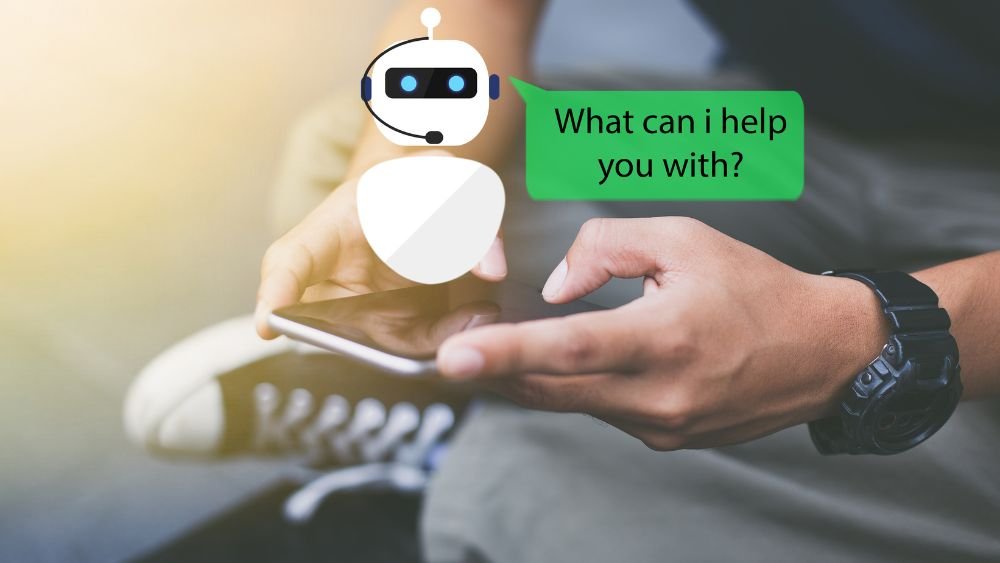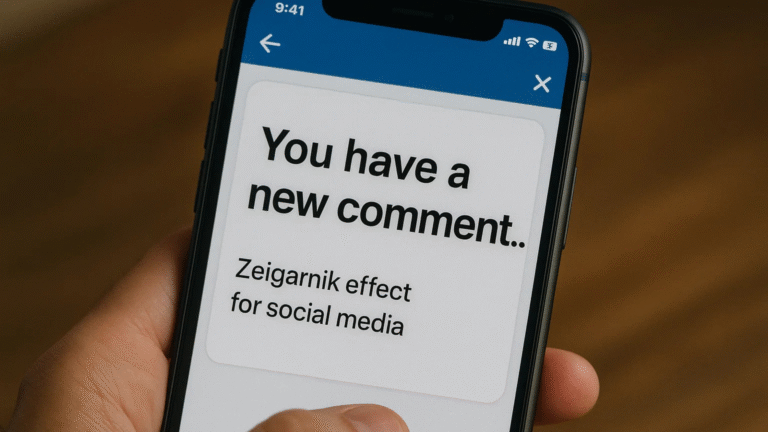With the help of technology, experts are continually working on reducing human efforts. AI technology or Artificial Intelligence has also helped us save time and money through its several features. Recently this technology has introduced a new platform named ChatGPT and it has created havoc.
ChatGPT from OpenAI is transforming the way we communicate with AI bots. This article is an attempt to explain the concept of ChatGPT and whether this new technology can also be used in customer service. Also, we’ll look at how online communication is enhanced with these modern chatbot systems.
Introduction to ChatGPT
Being the talk of the town for good reason, ChatGPT is the new chatbot model that is particularly good at talking to people. The previous chatbots allowed you to have a normal conversation, however, with ChatGPT, communication has reached the next level since it provides appropriate responses in seconds. For instance, you can assign the role of a customer service agent to the model and then have it answer customer queries.

Using this technology in customer service really makes sense since it is a master of communication. However, can ChatGPT model even be used there? Let’s get to the bottom of this question to proceed with the following article.
How Does the ChatGPT Technology Work?
ChatGPT is a specialized platform based on OpenAI’s GPT language model (Generative Pre-trained Transformer). It is particularly designed to respond naturally to instructions and questions. The base for GPT is machine learning, which is essential in creating artificial neural networks resembling the human nervous system.

Since it’s already well-trained, ChatGPT has thus created a multi-layered network.
The software used texts with around 500 billion words and learned how language works, what are the differences between spoken and written language, and in which form to answer which type of questions.
Difference Between Current Chatbot Models and ChatGPT
Traditional chatbots know the way of answering some questions, however, they cannot answer specifically. Therefore, in traditional chatbot communication, there are situations where the bot often asks: “What do you mean?” or where it provides different answer options from which the user has to choose the right one.
On the other hand, the ChatGPT model understands and processes the messages immediately. Consider the following example –
If a user now asks: “I want to buy a shirt that costs $500. Is the shipping free?”, the ChatGPT software internally reads the entries in its database, further identifying that the seller provides free shipping from $49 and also knows that $500 is more compared to $49. These two pieces of information are clubbed and a direct answer is given out, whereas a traditional chatbot would only revert as: “Free shipping is available from $49.”
Is ChatGPT Technology Suitable for Customer Service?
Before using technology in customer service for the first time, it should be adapted to the requirements of customer service. For instance, ChatGPT perceives some pieces of information as true that may not be. An example of this is, that ChatGPT thinks that every website always has a “forgot password” button at login.
The problem is that the software gives an answer assuming that it applies to all companies, but actually, it may be not to a specific case. The bot thus passes vague and general information confidently to the user.
So at the moment applying ChatGPT models in support is not yet possible, however, with a little coaching, the different vulnerabilities can be rectified to then answer customer queries.
Problems in Optimizing the ChatGPT Model for Customer Service and Their Solutions
The following drawbacks of the ChatGPT software are the reason why it is presently not yet possible to use this system in support. The optimization of these issues ensures that an appropriate AI agent is created that answers customer questions or instructions directly in the chat.

Problem: Knows a Lot, But Not Everything
ChatGPT has been filled with data until 2021. This indicates that its knowledge is limited to information until 2021. Additional training or knowledge sharing is necessary for fixing this vulnerability.
Solution – Providing Current Knowledge
Once you provide it with current knowledge, then it learns and uses it as its primary data source.
Problem: Genuine Appearance, Incorrect Information
The key issue with ChatGPT is that the bot perfectly looks authentic, but, the data it provides is not always correct or real data.
For example, phone numbers are directly taken from standards (US numbers), which are then sent to the customer. It’s not a real number, however, is sent as – “What a real number might look like”.
Solution – Guide to Truthful Answers
The software must be made to answer depending on the facts and not just sound good. This can be made possible with alignment constraints that make the software operate as if they were service agents. This can be considered as guiding a human agent to use the database to deliver answers and determine its attitude toward customers.
Problem: High Computational Effort
Running Large Language Models (LLM) such as ChatGPT needs special hardware. When a large model such as ChatGPT runs on a normal PC CPU, it takes around 10 seconds to process one word. So the process is both computationally and time intensive. Even with special hardware such as the GPU (the modern AI-age supercomputer) an inference call (a request for a response similar to chat) can take some time.
However, creating LLM-based applications within an appropriate time and cost framework has been possible since the end of 2022. However, these processes have to be constantly developed further so as to be able to work effectively and in an optimized manner.
Solution – Optimizing the Use of LLMs
For optimizing the use of the LLM, simple tasks such as finding relevant documents in the database, are taken over by simpler models. Whereas, LLMs can read and understand the clients’ instructions and then generate the response for the clients.
Problem: Restriction of Actions
ChatGPT and similar models usually only provide information, but cannot act. Although they are smart in communication, ultimately they only react to human input. They lack the execution of actions.
The model must be trained and adapted for actions necessary to perform specific support requests, and also capable of making data changes or damaging reports on its own, for example.
Solution – Training for Specific Support Tasks
Special procedures are needed for these support cases. For instance, forms can be used in which customers can directly enter their data in the chat itself and which can then be used directly.
ChatGPT-Level Chatbot in Customer Service
As already mentioned, ChatGPT software needs to be adapted to customer service before using it to answer customer queries. ChatGPT takes chatbots to a new level since the model has vast knowledge and is very natural in its interaction. By that time, however, the software can be a motivation and support for service agents, for instance, to find good wording for messages.

Developing a ChatGPT-level customer support chatbot is theoretically possible if the above-mentioned drawbacks of the software are improved with the solutions provided. It will answer customer queries intelligently and in natural language, however, is fully tuned to a knowledge base.
Thus ChatGPT will revolutionize customer service in a true sense through AI technology. Let us know what you think about this in the comments below!








